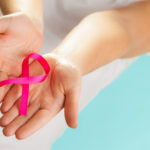[su_box title=”Here’s what you need to know…” style=”default”]
- One out of eight women will develop breast cancer
- HRT may beneficial in reducing the risk of breast cancer
- Asian and Hispanic women are at less risk for developing breast cancer
[/su_box]
Breast cancer is one of the most common cancers in women. A woman’s chance of developing breast cancer is nearly one in every eight women, according to statistics from the American Cancer Society.
The only cancer that is more common in women is skin cancer and the only cancer more deadly for women is lung cancer.
Enter you zip code above and start comparing health insurance quotes today!
What are the numbers?

The total of women who died from breast cancer in 2011 was about 39,520. A woman’s chance of dying from breast cancer is an estimated one in 35.
Men are far less likely to develop breast cancer, although it is still possible. A man’s risk of developing breast cancer is about one in 1,000, according to BreastCancer.org.
The number of new invasive breast cancer cases in men was estimated at 2,140 in 2011.
Is breast cancer getting more or less common?
The number of breast cancer incidents and the death rates from breast cancer have both been declining, BreastCancer.org reports. The decline in incidents has been about 2 percent per year from 1995 to 2005, but such a decline has only been seen in women over 50 years old.
BreastCancer.org says the decline may be due in part to a decline in the use of HRT, or hormone replacement therapy, thanks to a 2002 Women’s Health Initiative study that reported a possible link between HRT and breast cancer.
Death rates have been going down since 1990, particularly for women under 50 years of age. The U.S. has more than 2.6 million breast cancer survivors
Who is most at risk?

The least likely to develop breast cancer and die from it are Hispanic, Native-American, and Asian women.
If breast cancer runs in the family, especially with a first-degree relative such as a sister, daughter or mother, the risk of breast cancer doubles. The risk also increases if women inherit a mutated gene from either their mother or father that is linked to breast cancer.
Family history can play a part in breast cancer, but BreastCancer.org notes that the vast majority of 85 percent of the cases are not linked to a history of the disease in the family.
The greatest risks for developing breast cancer are being a woman and getting older, although a number of other risk factors can increase the likelihood of developing the disease.
In addition to hormone therapy, other risk factors include drinking alcohol, obesity and being exposed the radiation treatments in the chest area as a young adult or child, according to MayoClinic.com.
Does a woman’s age matter?
Risk factors beyond a woman’s control include starting her period before age 12 and starting menopause after age 55. Having a baby later in life, particularly after age 35, may also in increase the risk.
Despite past rumors, a woman’s risk of developing breast cancer does not increase because of antiperspirants, getting breast implants or wearing a tight bra.
A number of symptoms may indicate breast cancer, many of them associated with the appearance of and abnormalities in the breast area, according to MayoClinic.com.
Breast cancer may be behind abnormal skin texture, such as dimpling, pitting, or redness over the breast or skin that develops scales, peels or flakes off.
Breast lumps are a prime indication that cancer may be at work, as are changes to the shape or size of the breast. Inverted nipples or nipples that discharge blood are two more symptoms of the disease.
Diagnostic tools can help confirm or deny any breast cancer suspicions, with the most common being breast exams and mammograms.
Doctors advise women perform self-breast exams on a regular basis to help with early detection while mammograms are also suggested on a regular basis after a certain age.
Mammograms screen for breast cancer by taking an X-ray of the breast to check for any abnormalities. Other diagnostic tools include:
- Ultrasounds, which uses sound waves to detect for abnormalities in the breast
- Biopsy, which removes and analyzes a section of breast cells
- MRI, or magnetic resonance imaging, which uses radio waves and a magnet to check the area
How can women prevent breast cancer?
There is no 100 percent effective means of preventing breast cancer, although MayoClinic.com notes women do have ways to reduce their risk of developing the disease.
Early detection remains one of the most effective ways to catch the disease for treatment before it enters its deadly stages.
Limiting alcohol intake to one drink or less per day is a good place to start. It also helps to get at least 30 minutes of exercise per day and to maintain a healthy weight.
Women who have a family history of breast cancer can consider more aggressive prevention methods. One is chemoprevention, which are preventative medications that block estrogen to help reduce the breast cancer risk. Another is preventative surgery with the removal of healthy breasts.
Use our FREE online tool and start comparing health insurance quotes today!
[su_spoiler title=”References:” icon=”caret-square” style=”fancy” open=”yes”]
- http://www.cancer.gov/types/breast
- http://www.BreastCancer.org
- https://en.wikipedia.org/wiki/Breast_cancer
- http://www.webmd.com/breast-cancer/
- http://www.mayoclinic.org/
[/su_spoiler]



